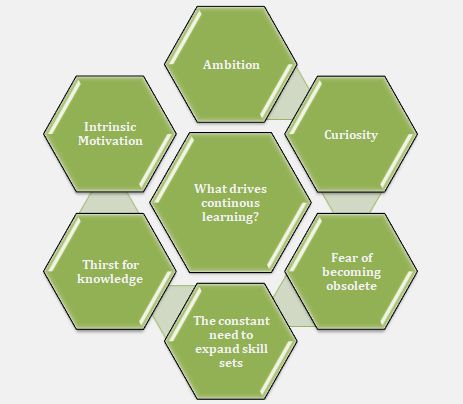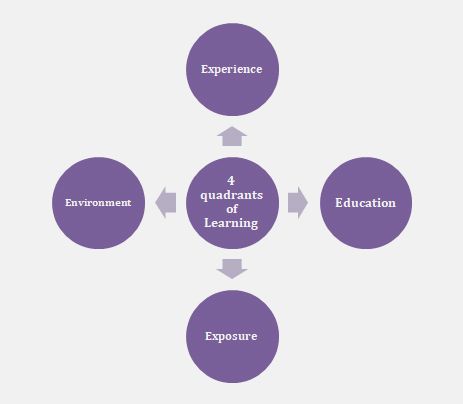Once you stop learning, you start dying – Albert Einstein
Today 's world is technologically advanced and yet surprisingly vulnerable which means we all need additional abilities and supple skills. Acquiring those is possible ONLY through continuous learning. On an individual level, people need to be innately motivated to continuously learn and thus take total control of their overall development. At an organizational level, employers have a vital role in providing a continuous learning environment to create a smarter workforce. Learning gives endless opportunities on how to approach the rapidly changing environment.
Continuous Learning can happen at two levels: Individual and Organizational
How can Individuals adopt Continuous learning?
How can organizations provide a continuous learning environment?
It may become too monotonous for every employee to stick to one job all the time. It is because of the fact that there is no real opportunity for them to learn something new. Organizations need to make sure that employees enjoy continuous opportunities to learn and that employees don't have to wait an unreasonable amount of time for those opportunities.
Why continuous learning at all?
Positive culture shift occurs when you see people owning and driving the learning process themselves. Continuous learning also allows employees to come up with new ideas and innovative solutions to the modern-day problems and conflicts which they constantly face at the workplace.
According to a survey:
Continuous learning is not just a great methodology for professionals to stay updated in an ever-changing workplace, it is also an essential tool for organizations to remain innovative, relevant, and ahead of their competitors. However, in order for it to work, it needs to become a lifestyle that comes naturally. And that takes time, effort, and vigilance. But once achieved the results are easily palpable. Even though culture change has to start at the top, you will know your organization has made a successful transition to a culture of continuous learning when you see employees driving their own independent quests for knowledge. Youneed every moving piece to be evolving competitively, mainly your people. You need your workforce and company values to be unified around a learner centric goal. That will measure your actual success.


About Author: Pavithra Urs is an Enterprise HR Strategic Leader. A Human capital investor. She works as an Associate Director for People Operations and heads L&D function for a prestigious Media & Entertainment company. Bringing along rich global experience in her field for 13+ yrs., she acts as first-level counsel to CXOs and Senior Leadership. In her wider role that extends beyond work, she is an HR columnist and writer, Coach and Mentor, Successful Women Leader uplifting and protecting the interests of women @workplace. She is an avid blogger, influencer, speaker, and a professional member of many HR professional organizations.]



